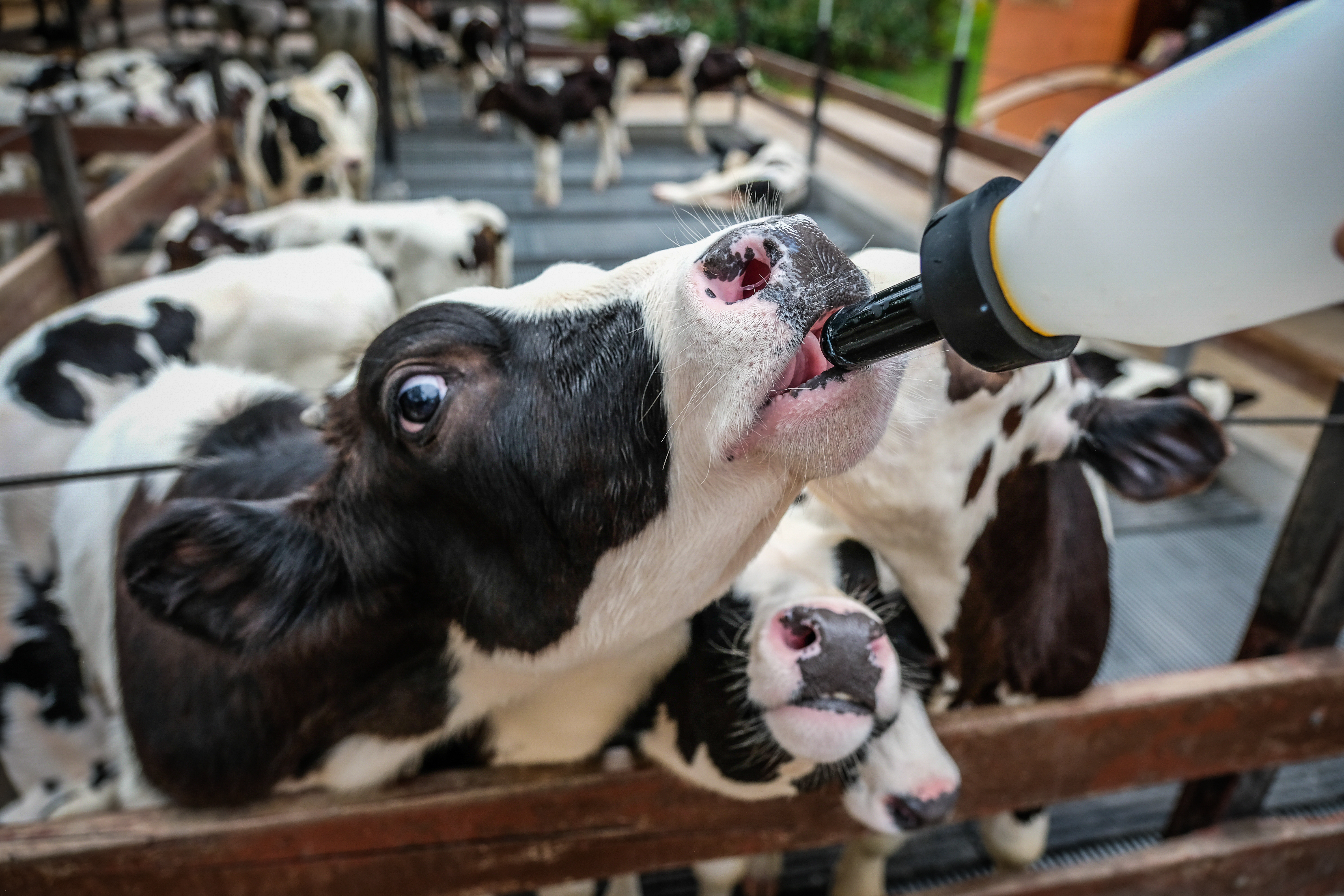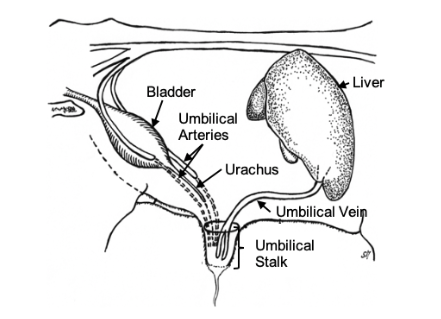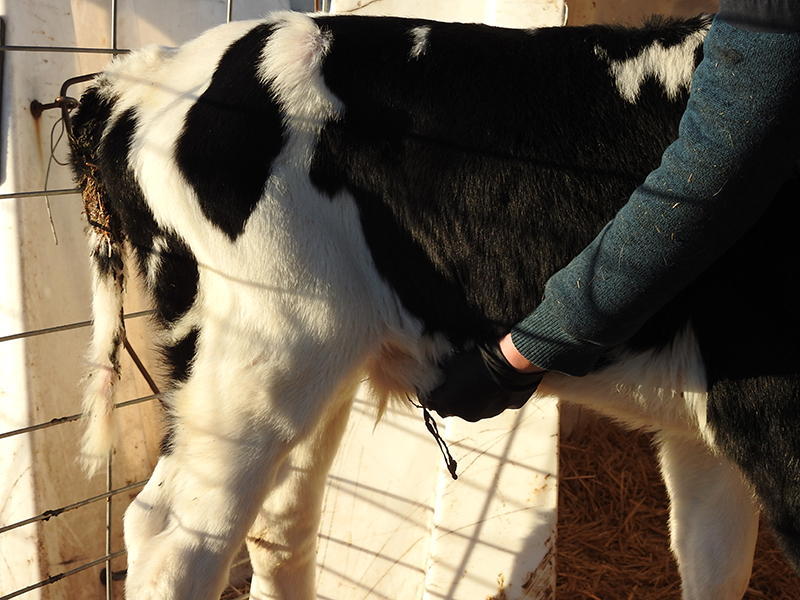Section 1 | Selecting the Right Calf
Page 06 /
Identifying Umbilical Infections: Heat, pain, and moisture
Producers that have experience in rearing calves can often identify calves showing early signs of respiratory disease and diarrhea. An often unchecked and unmanaged calf disease is an umbilical infection which can lead to serious complications and death. Unfortunately, it is common to find calves with an enlarged umbilicus with heat, pain, and moisture. Recent research shows that 27% of calves arrived at a veal facility in Ontario with an abnormal umbilicus. Having an infected umbilicus has been associated with an increased risk of dying leading to reduced health, welfare, and profitability of calves. This is one health parameter that is too often overlooked in both male and female calves.

Why is the Umbilicus Important to Evaluate?
The umbilical stalk (figure below) is part of the structure that was used to transfer blood between the dam and the fetus. Early in the calf’s life, the umbilicus has not dried, healed, and closed over.
As you can see from the figure below, the umbilicus is directly connected to the liver via an artery and vein, as well as the urinary bladder. Invasion by bacteria allows direct access to these organs, which can then spread throughout the body.

Figure: Adapted from Weiland et al.1
How to Identify Abnormal Umbilici?
Start by feeling the umbilical stump. If it is swollen (>2 cm in diameter), hot, painful, moist, or has a foul smelling discharge, the umbilicus is abnormal. Calves with an abnormal umbilicus should not be purchased, or should be severely discounted. Talk with your veterinarian on how to identify calves with an abnormal umbilicus and then develop an appropriate treatment protocol to follow if a calf is purchased with one.

Source: ACER Consulting Ltd.
We sat down with Dr. Marissa Hake, a veal veterinarian from the northeastern United States overseeing the health and welfare of over 25,000 head of veal cattle. She describes what is important to her facilities when purchasing calves
References
- Wieland, M., S. Mann, C. Guard, and D. Nydam. 2017. The influence of 3 different navel dips on calf health, growth performance, and umbilical infection assessed by clinical and ultrasonographic examination. J. Dairy Sci. 100:513-524